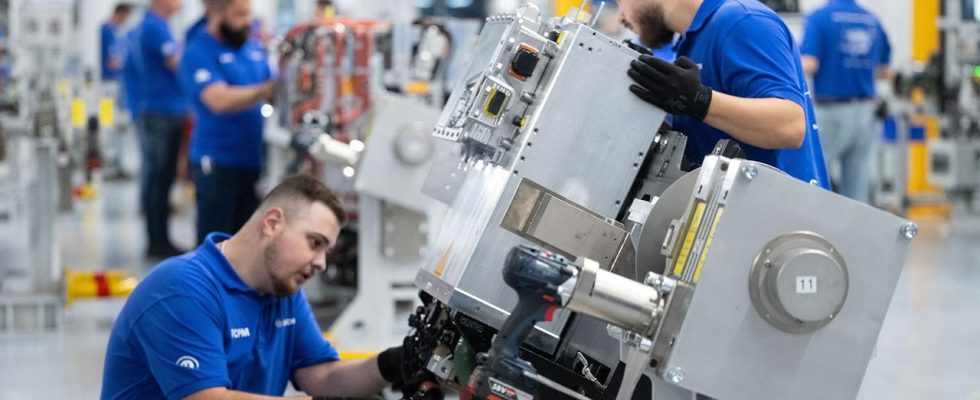At the beginning of the second half of the year, industry orders had fallen more sharply than they had in more than three years. Nevertheless, the number of employees increased – and short-time work decreased.
Despite weak orders and high energy costs, the number of employees in German industry has increased. At the end of July, almost 5.6 million people were working in manufacturing companies – around 66,400 or 1.2 percent more than a year earlier, as the Federal Statistical Office announced. There was also an increase of 2,800 or 0.1 percent compared to the previous month.
In addition, the ongoing economic downturn appears to have little impact on short-time work in Germany. The number of short-time workers was 110,000 people in August, after 150,000 in May, as the Munich ifo Institute reported on its calculations based on its own company survey and data from the Federal Employment Agency. The proportion of employees fell from 0.4 to 0.3 percent.
“The weak economy has had little impact so far”
Europe’s largest economy has failed to grow for three quarters in a row and will slip into recession in the second half of the year, according to some economists. New business in the manufacturing sector shrank by 11.7 percent in July compared to the previous month. The last time there was a sharper decline was at the beginning of the Corona crisis in April 2020. The Federation of German Industries (BDI) recently lowered its economic forecast.
Rising interest rates, high energy prices and the weak global economy are currently dampening demand for goods “Made in Germany”. “The weak economy has had little impact so far,” said ifo labor market researcher Sebastian Link, referring to short-time work. “The fact that the easier conditions for receiving short-time work benefits expired at the end of June may play a role.”
In construction, for example, part-time unemployment has not played a role so far despite the extremely bad mood, says Link. There, the number of short-time workers in August was 7,000, slightly below the figure of 8,000 determined in May, although construction is particularly affected by the increased financing and material costs. In retail there were 3,000 after 6,200, and for all service providers together there were only 11,000 after 18,000 short-time workers.
Differences in industry sectors
According to the information, around 80 percent of short-time workers who receive money equivalent to unemployment benefit for the lost hours work in the export-dependent industry. But the number fell there too, from 118,000 to 89,000. That’s 1.3 percent after 1.7 percent of employees in this economic sector. However, there is not a decline in all sectors of industry: the number of short-time workers increased in metal production and processing (11,000 after 7,400) and in mechanical engineering (20,000 after 13,000).
When it comes to employment development in general, the trend varies between individual sectors of industry. Manufacturers of data processing equipment, electronic and optical products saw the largest increase in employees at 5.6 percent compared to July 2022. The increases were also above average among producers of electrical equipment (plus 2.2 percent) and in mechanical engineering ( Plus 1.5 percent).
In contrast, there was a below-average increase of 1.0 percent each in the food and automotive industries, as well as in the production of metal products and in metal production and processing (plus 0.6 percent each). In contrast, the number of employees in the rubber and plastics industry fell by 1.0 percent and in the chemical industry by 1.2 percent.

